RPG-7
| RPG-7 | |
|---|---|
|
An RPG-7 with a Russian PG-7G inert training warhead and booster | |
| Type | Rocket-propelled grenade launcher[1] |
| Place of origin | Soviet Union |
| Service history | |
| In service | 1961–present |
| Used by | See Users |
| Wars | Since the Vietnam War |
| Production history | |
| Designer | Bazalt |
| Designed | 1958 |
| Manufacturer | Bazalt and Degtyarev plant (Russian Federation) |
| Produced | 1958–present |
| No. built | 9,000,000+ |
| Variants |
RPG-7V2 (current model) RPG-7D3 (paratrooper) Type 69 RPG (China) RPG-7USA (Airtronic) B-41 (Vietnam), (Cambodia) |
| Specifications | |
| Weight | 7 kg (15 lb) |
| Length | 950 mm (37.4 in) |
|
| |
| Caliber | 40 mm |
| Muzzle velocity |
115 m/s (boost) 300 m/s (flight) |
| Effective firing range | 200 m |
| Maximum firing range |
500 m (self detonates at ≈920 m (1,000 yd)) |
| Sights |
PGO-7 (2.7x), UP-7V Telescopic sight and 1PN51/1PN58 night vision sights Red dot reflex sight |
The RPG-7 (Russian: РПГ-7) is a portable, reusable, unguided, shoulder-launched, anti-tank rocket-propelled grenade launcher. Originally the RPG-7 (Ручной Противотанковый Гранатомёт – Ruchnoy Protivotankoviy Granatomyot – Hand-held anti-tank grenade launcher) and its predecessor, the RPG-2, were designed by the Soviet Union; it is now manufactured by the Russian company Bazalt. The weapon has the GRAU index 6G3.
The ruggedness, simplicity, low cost, and effectiveness of the RPG-7 has made it the most widely used anti-armor weapon in the world. Currently around 40 countries use the weapon, and it is manufactured in several variants by nine countries. It is popular with irregular and guerrilla forces. The RPG has been used in almost all conflicts across all continents since the mid-1960s from the Vietnam War to the early 2010s War in Afghanistan.
Widely produced, the most commonly seen major variations are the RPG-7D paratrooper model (can be broken into two parts for easier carrying), and the lighter Chinese Type 69 RPG. DIO of Iran manufactures RPG-7s with olive green handguards, H&K pistol grips, and a Commando variant.
The RPG-7 was first delivered to the Soviet Army in 1961 and deployed at a squad level. It replaced the RPG-2, having clearly out-performed the intermediate RPG-4 design during testing. The current model produced by the Russian Federation is the RPG-7V2, capable of firing standard and dual high explosive anti-tank (HEAT) rounds, high explosive/fragmentation, and thermobaric warheads (see below), with a UP-7V sighting device fitted (used in tandem with the standard 2.7× PGO-7 optical sight) to allow the use of extended range ammunition. The RPG-7D3 is the equivalent paratrooper model. Both the RPG-7V2 and RPG-7D3 were adopted by the Russian Ground Forces in 2001.
Etymology
The English-language term "rocket-propelled grenade", though frequently encountered and reasonably descriptive, is a backronym for "RPG" and not based on a literal translation. "RPG" properly refers to the launcher itself, Ручной Противотанковый Гранатомёт (Ruchnoy Protivotankoviy Granatomyot – Hand-held anti-tank grenade launcher), whereas "PG" refers to the ammunition.
Description
The launcher is reloadable and based around a steel tube, 40 millimeters in diameter, 95.3 centimeters long, and weighing 7 kilograms. The middle of the tube is wood wrapped to protect the user from heat and the end is flared to assist in blast shielding and recoil reduction. Sighting is usually optical with a back-up iron sight, and passive infra-red and night sights are also available. The launchers designated RPG-7N1 and RPG-7DN1 can thus mount the multi-purpose night vision scope 1PN51[2] and the launchers designated RPG-7N2 and RPG-7DN2 can mount the multi-purpose night vision scope 1PN58.[3]
As with similar weapons, the grenade protrudes from the launch tubes. It is 40–105 millimeters in diameter and weighs between 2.0[4][5][6] and 4.5 kilograms. It is launched by a gunpowder booster charge, giving it an initial speed of 115 meters per second, and creating a cloud of light grey-blue smoke that can give away the position of the shooter.[7] The rocket motor[8] ignites after 10 meters and sustains flight out to 500 meters at a maximum velocity of 295 meters per second. The grenade is stabilized by two sets of fins that deploy in-flight: one large set on the stabilizer pipe to maintain direction and a smaller front set to induce rotation. The grenade can fly up to 1,100 meters; the fuze sets the maximum range, usually 920 meters.[9]
Propulsion system

According to the United States Army Training and Doctrine Command (TRADOC) Bulletin 3u (1977) Soviet RPG-7 Antitank Grenade Launcher—Capabilities and Countermeasures, the RPG-7 munition has two sections: a "booster" section and a "warhead and sustainer motor" section. These must be assembled into the ready-to-use grenade. The booster consists of a "small strip powder charge" that serves to propel the grenade out of the launcher; the sustainer motor then ignites and propels the grenade for the next few seconds, giving it a top speed of 294 meters per second. The TRADOC bulletin provides anecdotal commentary that the RPG-7 has been fired from within buildings, which agrees with the two-stage design. It is stated that only a 2-meter standoff to a rear obstruction is needed for use inside rooms or fortifications. The fins not only provide drag stabilization, but are designed to impart a slow rotation to the grenade.
Due to the configuration of the RPG-7 sustainer/warhead section, it responds counter-intuitively to crosswinds. A crosswind will tend to exert pressure on the stabilizing fins, causing the projectile to turn into the wind. While the rocket motor is still burning, this will cause the flight path to curve into the wind. The TRADOC bulletin explains aiming difficulties for more distant moving targets in crosswinds at some length. Similar to a recoilless rifle the RPG-7 has no noticeable recoil, the only effect during firing being that of the sudden lightness of the launcher as the rocket leaves the tube.
Ammunition

The RPG-7 can fire a variety of warheads for anti-armor (HEAT, PG-Protivotankovaya Granata) or anti-personnel (HE, OG-Oskolochnaya Granata) purposes, usually fitting with an impact (PIBD) and a 4.5 second fuze. Armor penetration is warhead dependent and ranges from 30 to 60 centimeters of RHA; one warhead, the PG-7VR, is a 'tandem charge' device, used to defeat reactive armor with a single shot.
Current production ammunition for the RPG-7V2 consists of four main types:
- PG-7VL [c.1977] Improved 93 mm HEAT warhead effective against most vehicles and fortified targets.[4][5][6]
- PG-7VR [c.1988] Dual 64 mm/105 mm HEAT warhead for defeating modern armored vehicles equipped with reactive armor blocks. The first warhead (64 mm HEAT) detonates the reactive armor block prematurely and the second warhead (105 mm HEAT) passes through the gap to hit the exposed armor underneath.
- TBG-7V [c.1988] 105 mm Thermobaric warhead for anti-personnel and urban warfare.
- OG-7V [c.1999] 40 mm Fragmentation warhead for anti-personnel warfare (warhead is within caliber due to limitations of international treaties).
Other warhead variants include:
- PG-7V [c.1961] Baseline 85 mm HEAT warhead capable of penetrating 260 mm RHA.[10][11][12]
- PG-7VM [c.1969] Improved 70 mm HEAT warhead capable of penetrating 300 mm RHA.[11][12]
- PG-7VS [c.1972] Improved 73 mm HEAT warhead capable of penetrating 400 mm RHA.[11][12]
- PG-7VS1 [c.mid-1970s] Cheaper PG-7VS version capable of penetrating 360 mm RHA.[11]
- GSh-7VT [c.2013] Anti-bunker warhead with cylindrical follow-through blast-fragmentation munition followed by explosively formed penetrator.[13]
Specifications
Manufacturer specifications for the RPG-7V1.[14][15]
| Name | Type | Image | Weight | Explosive weight[16][17][18] | Diameter | Penetration | Lethal radius |
|---|---|---|---|---|---|---|---|
| PG-7VL | Single-stage HEAT | |
2.6 kg (5.7 lb) | 730 g OKFOL (95% HMX + 5% wax) | 93 mm (3.7 in) | >500 mm (20 in) RHA | |
| PG-7VR | Tandem charge HEAT | |
4.5 kg (9.9 lb) | ?/1.43 kg OKFOL (95% HMX + 5% wax) | 64 mm (2.5 in)/105 mm (4.1 in) | 600 mm RHA (with reactive armor) 750 mm RHA (without reactive armor) |
|
| OG-7V | Fragmentation | |
2 kg (4 lb) | 210 g (7.4 oz) A-IX-1 | 40 mm (1.6 in) | 7 m (23 ft) (vs. body armor) 150 m without body armor | |
| TBG-7V | Thermobaric | |
4.5 kg (9.9 lb) | 1.9 kg ОМ 100МИ-3Л + 0.25 kg A-IX-1(as thermobaric explosive booster) | 105 mm (4.1 in) | 10 m (30 ft) | |
Hit probabilities
A U.S. Army evaluation of the weapon gave the hit probabilities on a 5-meter (16 ft) wide, 2.5-meter (8 ft 2 in) tall panel moving sideways at 4 meters per second (8.9 mph).[19] This probability decreases when firing in a crosswind due to the unusual behaviour of the round; in an 11-kilometer-per-hour (6.8 mph) (3 m/s) wind, the gunner can not expect to get a first-round hit more than 50% of the time beyond 180 m.[20]

| Range | Percent |
|---|---|
| 50 m | 100% |
| 100 m | 96% |
| 200 m | 51% |
| 300 m | 22% |
| 400 m | 9% |
| 500 m | 4% |
History of use
Accurate firing is difficult at ranges over 300 meters; the phrase "the closer the better" has always been true. During the Soviet–Afghan War, the mujahideen tended to use the weapon at ranges of less than 80 meters. The RPG-7's predecessor, the RPG-2, was the main anti-tank weapon of Vietcong forces in the early stage of the Vietnam War, mainly used to counter the lightly armored M113 and other armored vehicles. This was, in turn, countered by mounting barbed wire bundles or sections of chain link fence, supported by 2 or 3 "U" shaped engineer stakes, in front of the vehicle as a portable stand-off defense.[21]
The RPG-7 was used by the Provisional Irish Republican Army in Northern Ireland from 1969 to 2005, most notably in Lurgan, County Armagh, where it was used against British Army observation posts and the towering military base at Kitchen Hill in the town.[22] The IRA also used them in Catholic areas of West Belfast against British Army armoured personnel carriers and Army forward operating bases (FOB). Beechmount Avenue in Belfast became known as "RPG Avenue" after attacks on British troops.[23]
In Mogadishu, Somalia, rocket-propelled grenades were used to down two U.S. Army Black Hawk helicopters in 1993.[24][25]
The Taliban (in Afghanistan) have formed armored-vehicle hunter/killer teams that work together with as many as 15 RPGs to destroy armoured vehicles, aiming for a mobility kill by firing at the tracks to stop the tank from moving, then attempting to destroy the main armour while the tank is disabled.[26]
Users



-
 Afghanistan[27]
Afghanistan[27] -
 Albania 5,000 units
Albania 5,000 units -
 Angola[27]
Angola[27] -
 Armenia[27]
Armenia[27] -
 Azerbaijan[27]
Azerbaijan[27]
-
 Belarus[27]
Belarus[27] -
 Benin[27]
Benin[27] -
 Bolivia: Type 69 variant in use.[29]
Bolivia: Type 69 variant in use.[29] -
 Botswana[27]
Botswana[27] -
 Bulgaria: Produced locally by Arsenal Corporation as ATGL-L.[30]
Bulgaria: Produced locally by Arsenal Corporation as ATGL-L.[30] -
 Burkina Faso[31]
Burkina Faso[31] -
 Burundi[32]
Burundi[32] -
 Cambodia[27]
Cambodia[27] -
 Cape Verde[27]
Cape Verde[27] -
 Central African Republic[27]
Central African Republic[27] -
 Chad[27]
Chad[27] -
 China: Type 69 variant.[33]
China: Type 69 variant.[33] -
 Congo-Brazzaville[27]
Congo-Brazzaville[27] -
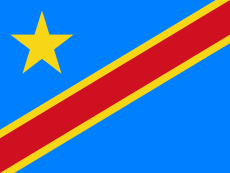 Congo-Kinshasa[27]
Congo-Kinshasa[27] -
 Croatia[27]
Croatia[27] -
 Cuba[27]
Cuba[27] -
 Cyprus[27]
Cyprus[27] -
 Czech Republic[27]
Czech Republic[27] -
 Djibouti[27]
Djibouti[27] -
 Egypt[27]
Egypt[27] -
 Ecuador[34]
Ecuador[34] -
 Eritrea[27]
Eritrea[27] -
 Fiji[35]
Fiji[35] -
 Georgia: Modified version "RPGL-7G" locally produced by STC DELTA[36][37][38]
Georgia: Modified version "RPGL-7G" locally produced by STC DELTA[36][37][38] -
 Ghana[27]
Ghana[27] -
 Guinea[27]
Guinea[27] -
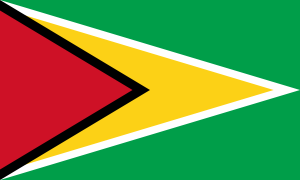 Guyana[27]
Guyana[27] -
 Hungary[39]
Hungary[39] -
 Indonesia. Used by the marine corps[40][41]
Indonesia. Used by the marine corps[40][41] -
 Iran[27]
Iran[27] -
 Iraq[27]
Iraq[27] -
 Israel: Large stocks held as secondary ATW. Rounds produced locally.[42]
Israel: Large stocks held as secondary ATW. Rounds produced locally.[42] -
 Jordan[27]
Jordan[27] -
 Kazakhstan[27]
Kazakhstan[27] -
 Kenya[43]
Kenya[43] -
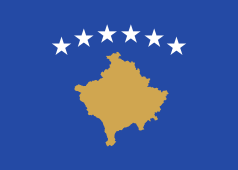 Kosovo[27]
Kosovo[27] -
 Kyrgyzstan[27]
Kyrgyzstan[27] -
 Laos[27]
Laos[27] -
 Latvia[27]
Latvia[27] -
 Lebanon[27]
Lebanon[27] -
 Liberia: Used by both the Liberian Army and guerrilla factions in the Liberian Civil Wars.[44][45]
Liberia: Used by both the Liberian Army and guerrilla factions in the Liberian Civil Wars.[44][45] -
 Libya[27] (used by both sides in the Libyan Civil War)
Libya[27] (used by both sides in the Libyan Civil War) -
 Lithuania[27]
Lithuania[27] -
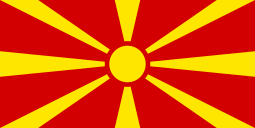 Macedonia[27]
Macedonia[27] -
 Madagascar[27]
Madagascar[27] -
 Malaysia[46][47][48]
Malaysia[46][47][48] -
 Malta[27]
Malta[27] -
 Mauritania[27]
Mauritania[27] -
 Moldova[27]
Moldova[27] -
 Mongolia[27]
Mongolia[27] -
 Morocco[27]
Morocco[27] -
 Nicaragua[27]
Nicaragua[27] -
 Nigeria: Produced under license by the Defence Industries Corporation of Nigeria[49][27]
Nigeria: Produced under license by the Defence Industries Corporation of Nigeria[49][27] -
 Niger[50]
Niger[50] -
 North Korea[27]
North Korea[27] -
 Oman[51]
Oman[51] -
 Pakistan: Used by Pakistan Army and paramilitary forces of Pakistan.[27] RPG-7V version made under license by Pakistan Machine Tool Factory.[52]
Pakistan: Used by Pakistan Army and paramilitary forces of Pakistan.[27] RPG-7V version made under license by Pakistan Machine Tool Factory.[52] -
 Papua New Guinea[53]
Papua New Guinea[53] -
 Philippines: Philippine Army ATGL-L2 variant.[54]
Philippines: Philippine Army ATGL-L2 variant.[54] -
 Poland[27]
Poland[27] -
 Romania[27] – Produced locally by SC Carfil SA from Brașov as AG-7 (Romanian: Aruncătorul de Grenade 7, Grenade Launcher 7).[55]
Romania[27] – Produced locally by SC Carfil SA from Brașov as AG-7 (Romanian: Aruncătorul de Grenade 7, Grenade Launcher 7).[55] -
 Russia[27]
Russia[27] -
 Rwanda[27][56]
Rwanda[27][56] -
 Sao Tome and Principe[27]
Sao Tome and Principe[27] -
 Saudi Arabia: Saudi army.[57]
Saudi Arabia: Saudi army.[57] -
 Senegal[27]
Senegal[27] -
 Seychelles[27]
Seychelles[27] -
 Sierra Leone[27]
Sierra Leone[27] -
 Singapore - operated in 1968, and decommissioned in 1985.[46]
Singapore - operated in 1968, and decommissioned in 1985.[46] -
 Somalia[27]
Somalia[27] -
 South Africa: South African National Defence Force.[58]
South Africa: South African National Defence Force.[58] -
 Sudan: Made by Military Industry Corporation as the Sinar.[59]
Sudan: Made by Military Industry Corporation as the Sinar.[59]  Suriname: Used by the Military of Suriname[27]
Suriname: Used by the Military of Suriname[27]-
 Syria[27] (used by all sides in the Syrian civil war)
Syria[27] (used by all sides in the Syrian civil war) -
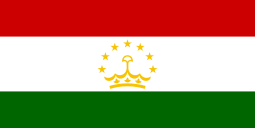 Tajikistan[27]
Tajikistan[27] -
 Togo[27]
Togo[27] -
 Thailand: RPG-7V1, and Type 69 variant in use.
Thailand: RPG-7V1, and Type 69 variant in use. -
 Turkey[60]
Turkey[60] -
 Turkmenistan[27]
Turkmenistan[27] -
 Ukraine[27]
Ukraine[27] -
 Uzbekistan[27]
Uzbekistan[27] -
 Venezuela[27]
Venezuela[27] -
 Vietnam[27] Designated the B-41 in North Vietnamese service.
Vietnam[27] Designated the B-41 in North Vietnamese service. -
 Yemen[27]
Yemen[27] -
 Zambia[27]
Zambia[27] -
 Zimbabwe[27]
Zimbabwe[27]
Former users
See also
- AT4
- AT-3 Sagger
- B-300
- Carl Gustav recoilless rifle
- Bazooka
- M72 LAW
- Panzerfaust 3
- RPG-16
- RPG-18
- Yasin (RPG)
- MK153
- List of Russian weaponry
References
- ↑ "RPG-7/RPG-7V/RPG-7VR Rocket Propelled Grenade Launcher (Multi Purpose Weapon)". Defense Update. 2006. Retrieved 23 January 2011.
- ↑ ИЗДЕЛИЕ 1ПН51 ТЕХНИЧЕСКОЕ ОПИСАНИЕ И ИНСТРУКЦИЯ ПО ЭКСПЛУАТАЦИИ [PRODUCT 1PN51 TECHNICAL DESCRIPTION AND OPERATING INSTRUCTIONS] (in Russian). January 1992. pp. 11, 16.
- ↑ ИЗДЕЛИЕ 1ПН58 ТЕХНИЧЕСКОЕ ОПИСАНИЕ И ИНСТРУКЦИЯ ПО ЭКСПЛУАТАЦИИ [PRODUCT 1PN58 TECHNICAL DESCRIPTION AND OPERATING INSTRUCTIONS] (in Russian). February 1991. pp. 5, 15.
- 1 2 John Pike. "RPG-7". globalsecurity.org. Retrieved 2014-01-20.
- 1 2 "RosOboronExport". rusarm.ru. Retrieved 2014-01-20.
- 1 2 "Images stories of east_europe,rpg-7_ammunition_Russia_russian_001". armyrecognition.com. Retrieved 2014-01-20.
- ↑ Infantry, Volumes 88-90, Infantry School (U.S.), United States Army Infantry School, United States Army Infantry School. Editorial and Pictorial Office, United States Army Infantry School. Book Dept, U.S. Army Infantry School, 1998 - Infantry
- ↑ no rocket motors in OG-7V
- ↑ Mexico’s Drug Lords Ramp Up Their Arsenals with RPGs, By Ioan Grillo / Mexico CityOct. 25, 2012
- ↑ RPG-7 antitank grenade launcher (USSR / Russia) - Modernfirearms.net
- 1 2 3 4 RPG-7 - Military-Today.com
- 1 2 3 RPG-7 Anti-tank rocket grenade launcher - Armyrecognition.com
- ↑ FKP GkNIPAS completes development of anti-bunker round for RPG-7V2 grenade launcher - Janes.com, 30 June 2013
- ↑ "Rosoboronexport". Rusarm.ru. Retrieved 2012-02-20.
- ↑ John Pike. "RPG-7". Globalsecurity.org. Retrieved 2012-02-20.
- ↑ Per Ordata
- ↑ Per The last picture, source from deputy chief designer of Bazalt
- ↑ Per defense-update RPG-29 due to PG-29V and PG-7VR has same warhead
- ↑ TRADOC BULLETIN 1, Range and Lethality of U.S. and Soviet Anti-Armour Weapons. United States Army Training And Doctrine Command. 30 September 1975.
- ↑ TRADOC BULLETIN 3, Soviet RPG-7 Antitank Grenade Launcher. United States Army Training And Doctrine Command. November 1976.
- ↑ S.Taylor. "A Troop 4th Squadron, 12th US Cavalry, 1st Brigade 5th Infantry Division (Mechanized)". Atroop412cav.com. Retrieved 2012-02-20.
- ↑ Oppenheimer, A.R. (2009). IRA The Bombs and the Bullets: A history of deadly ingenuity. Dublin: Irish Academic Press. p. 227. ISBN 978-0-7165-2895-1. pp. 240–241
- ↑ Harrison, David (2007-05-13). "Fragile calm behind Ulster's 'peace walls'". Telegraph.co.uk. Retrieved 2012-02-20.
- ↑ Speck, Shane (2004-03-11). "How Rocket-Propelled Grenades Work". Science.howstuffworks.com. Retrieved 2012-02-20.
- ↑ Asymmetric Warfare: Threat and Response in the 21st Century, by Rod Thornton
- ↑ Popular Mechanics Mar 2004. Books.google.com.my. March 2004. Retrieved 2012-02-20.
- 1 2 3 4 5 6 7 8 9 10 11 12 13 14 15 16 17 18 19 20 21 22 23 24 25 26 27 28 29 30 31 32 33 34 35 36 37 38 39 40 41 42 43 44 45 46 47 48 49 50 51 52 53 54 55 56 57 58 59 60 61 62 63 64 65 66 Jones, Richard D. Jane's Infantry Weapons 2009/2010. Jane's Information Group; 35 edition (January 27, 2009). ISBN 978-0-7106-2869-5.
- ↑ Iliya Pitalev (2016-04-09). "The Armenians are using different weapons against Azerbaijani positions in Nagorno-Karabakh region including mortars, Azerbaijan's Defense Ministry said Saturday.". Sputnik News. Retrieved 2017-08-05.
- ↑ (in Korean) 밀짤 게시판 (2014-03-24). "볼리비아군 사진들". naver.com. Retrieved 2017-08-08.
- ↑ ATGL-L anti-tank grenade launcher, arsenal.bg
- ↑ "Burkina Faso Army defence force ranks military pattern camouflage combat field uniforms dress grades - Army Recognition - Army Recognition". armyrecognition.com. Retrieved 2014-01-20.
- ↑ "Kateholt.com : Galleries". kateholt.com. Retrieved 2014-01-20.
- ↑ "Modern Firearms – RPG-7". World.guns.ru. Retrieved 2012-02-20.
- ↑ World Armies (2010-02-05). "Ecuadorian Army". flicker. Retrieved 2017-04-06.
- ↑ "Rosyjska broń dla Fidżi" (in Polish). altair.pl. Retrieved 2016-02-21.
- ↑ http://delta.gov.ge/en/product/hand-anti-tank-grenade-launcher-rpg-7g/
- ↑ "ქართული წარმოების სამხედრო აღჭურვილობა". geo-army.ge. Retrieved 2014-01-20.
- ↑ http://tbilaviamsheni.ge/gallery/rpg%20stc%20delta.pdf
- ↑ Lugosi, József (2008). "Gyalogsági fegyverek 1868–2008". In Lugosi, József; Markó, György. Hazánk dicsőségére: 160 éves a Magyar Honvédség. Budapest: Zrínyi Kiadó. p. 389. ISBN 978-963-327-461-3.
- ↑ "albums/y208/elite_navyseal/RPG7Marinir". i6.photobucket.com. Retrieved 2014-01-20.
- ↑ http://www.marinir.mil.id/berita.php?id=20120319132829. Retrieved October 30, 2012. Missing or empty
|title=(help) - ↑ Katz, Samuel (1986) Israeli Defence Forces Since 1973. Osprey ISBN 0-85045-687-8
- ↑ World Armies (2012-10-15). "Kenyan Army". World Armies. Retrieved 2017-04-06.
- ↑ Chris Hondros (2011-04-20). "Photo tribute to photographer killed in Libya 5 years ago". CBS News. Retrieved 2017-08-08.
- ↑ Kuni Takahashi (2003-06-23). "Kuni Takahashi Photography". photoshelter.com. Retrieved 2017-08-08.
- 1 2 "RPG–7 – Rocket Propelled Grenade Launcher (1961)". Military Factory. 2012-05-16. Retrieved 2012-11-20.
- ↑ Nazrini Badarun (24 May 2017). "Unit khas polis ESSZONE akan terima RPG baru" (in Malay). New Sabah Times. Archived from the original on 5 June 2017. Retrieved 6 June 2017.
- ↑ "Rocket-propelled grenade boost for security". Daily Express. 24 May 2017. Archived from the original on 5 June 2017. Retrieved 6 June 2017.
- ↑ Okoroafor, Cynthia (2015-08-27). "You probably didn’t know that Nigeria already manufactures these weapons". Ventures. Retrieved 2017-01-24.
- ↑ https://www.bmvg.de/de/mediathek/bundeswehr-in-niger--unterwegs-mit-einer-patrouille-16480
- ↑ World Armies (2016-05-04). "Royal Army of Oman". flicker. Retrieved 2017-04-06.
- ↑ http://www.sadefensejournal.com/wp/?p=2794
- ↑ Alpers, Philip (2010). Karp, Aaron, ed. The Politics of Destroying Surplus Small Arms: Inconspicuous Disarmament. Abingdon-on-Thames: Routledge Books. pp. 168–169. ISBN 978-0-415-49461-8.
- ↑ "Philippines acquires RPG-7 (USA) for anti-armour operations". 2014-01-13. Archived from the original on January 16, 2014. Retrieved 2014-01-15.
- ↑ Carfil website Archived August 27, 2007, at the Wayback Machine.
- ↑ "Rwanda Rwandan Army ranks land ground forces combat uniforms military equipment rwandais grades unif - Army Recognition - Army Recognition". armyrecognition.com. Retrieved 2014-01-20.
- ↑ "All sizes | 126829433516 | Flickr – Photo Sharing!". flickr.com. Retrieved 2014-01-20.
- ↑ "Anti Tank weapons". South African Army. Retrieved 2014-01-20.
- ↑ Sinar Light Antitank Rocket Launcher Retrieved on March 17, 2009.
- ↑ Pike, John (2004-05-14). "The future of Russian-Turkish military-technical cooperation". Globalsecurity.org. Retrieved 2012-02-20.
- ↑ Neil Grant (2015). Rhodesian Light Infantryman: 1961-1980. Osprey Publishing. p. 23. ISBN 1472809629.
- ↑ Nortje, Piet (2003). 32 Battalion. Zebra Press. p. 98. ISBN 978-1-86872-914-2.
External links
| Wikimedia Commons has media related to RPG-7. |
- Manufacturer's site
- Countering the RPG threat
- How Stuff Works – RPG(7)
- RPG-7 analysis and user´s manual
- Technical data, instructional images and diagrams of the RPG-7 (in Russian)
- Ultimate Weapons Rpg 7 Military Channel on YouTube


